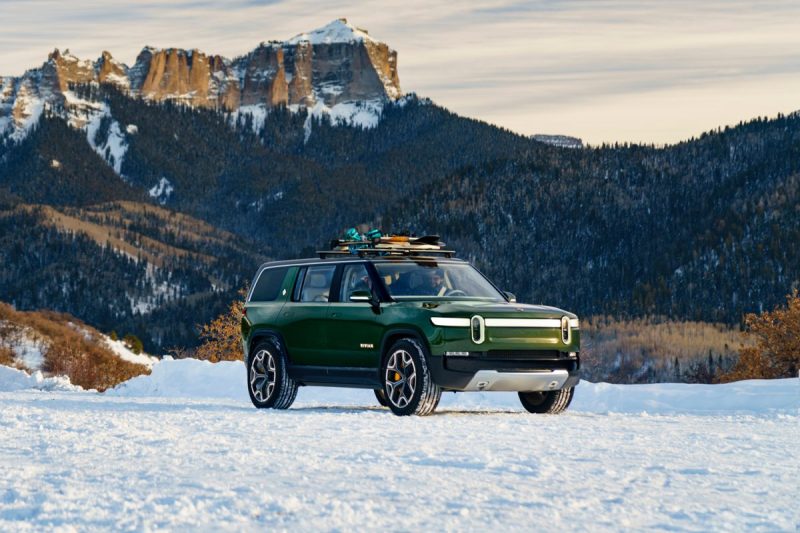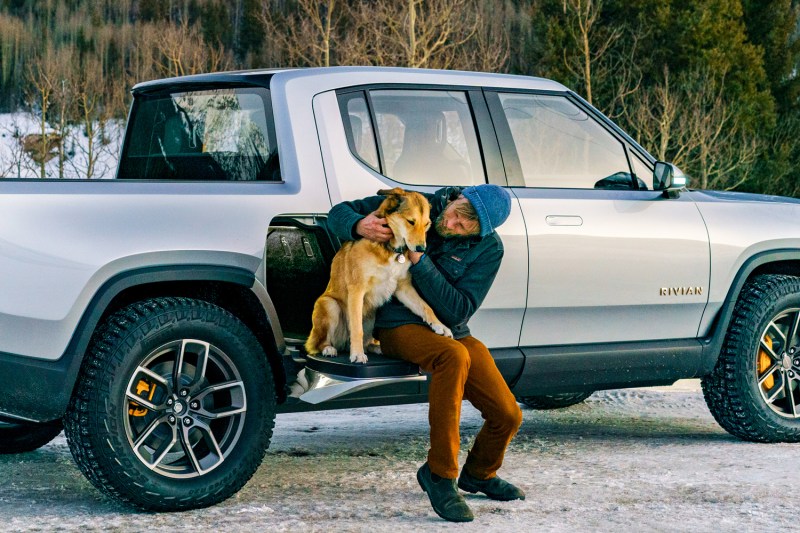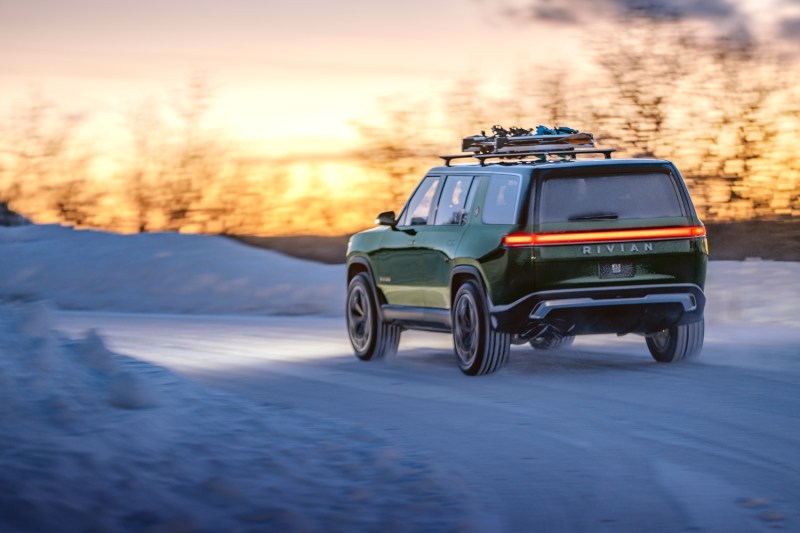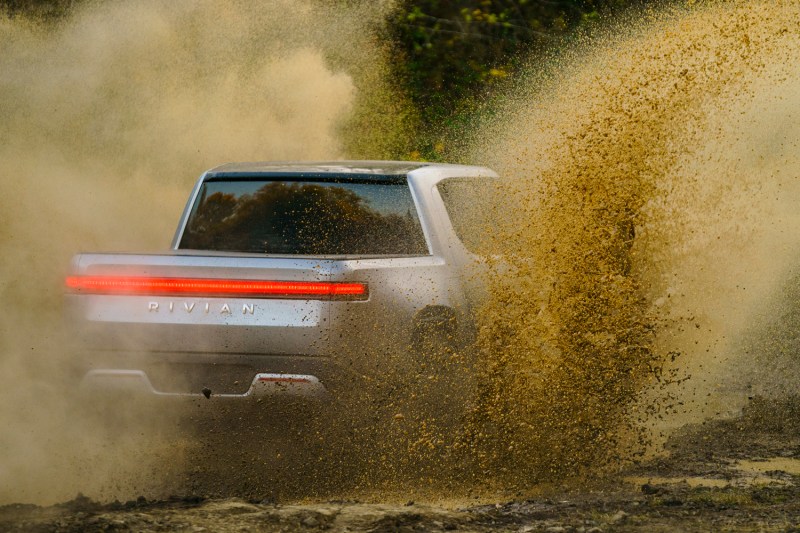
The future of adventure is electric, and Rivian knows it. The Rivian auto company was founded in 2009, but only just recently revealed its first electric truck and SUV at the LA Auto Show in late 2018. We still have to take Rivian’s word for all the specs and features, but even if the company launches with part of this list, it will be ridiculously impressive.
Rivian started developing a sports coupe, but around 2011 pivoted to focus on the adventure vehicle space. The brand now offers the R1T pickup truck and R1S SUV. Both vehicles will have four motors, one per wheel, with the highest trims eventually launching with 750 horsepower and 800 lb-ft of torque. All that torque results in a 0 to 60 mph time of just 3 seconds. When you’re done beating supercars off the line, you can hook up an airstream trailer and tow 11,000 pounds with the truck (7,700 pounds with the R1S). Three different battery packs will give 230, 300, and 400-mile ranges.
Almost Autonomous
The vehicles will come packed with visual cameras, lidar, radar, and ultrasonic sensors to allow autonomous driving. While they’ll have the hardware needed for Level 3 autonomous driving they will likely launch with Level 2 enabled and get software updates later on. Level 3 is similar to Tesla’s autopilot where the car drives for the most part but you have to be ready to intervene if necessary. Level 2 includes features like adaptive cruise control and lane assist driving on the highway.

While not a current feature, CEO RJ Scaringe says he wants to see the truck’s autonomy used for adventure. They may be able to drive us through National Parks on a guided tour. The passengers could sit back and enjoy the scenery and listen to the internal ‘tour guide.’ Is there a trail where you need to be dropped off at one end and picked up at the other? Rivian might be able to help with that in the future.
Off-Road
Just being able to fine-tune torque at each wheel, climb 45-degree slopes, and ford three feet of water will make Rivians epic off-road vehicles. A full-size spare, AC outlets, and a built-in air compressor are hidden in the bed for when you need them. We can’t forget the air suspension that can increase the 8 inches of ground clearance to 14 when off-road.
Everything and the Kitchen Sink
One of the best features of the R1T is the “gear tunnel.” The storage area sits between the cab and the bed, accessed from small doors on either side. If both doors are open, you can see right through the vehicle. It’s perfectly sized for snowboards, golf clubs, or a kitchen sink.

Speaking of the kitchen sink, at Overland Expo 2019, Rivian debuted a camp kitchen module that slides out of the gear tunnel. The top of the module is an induction cooktop, work surface and small sink with an electric pump. Underneath, compartments hold cutlery, plates, bowls, pots, and pans. Sitting on the back is an electric kettle and don’t forget the 5-gallon water jug just inside the truck end. The whole thing is plugged into the truck and powered by the massive battery pack. They say you can cook for a week and use only 11% of the battery. All your food can be stored in an electric cooler in the front trunk.
We can’t camp or overland without roof racks on top to help carry gear. The racks have quick release buttons and can be mounted on the roof, on top of the bed, or inside the bed within seconds. Easily mount bikes in the bed, a roof-tent on top of the bed, or put boats on top. The gear tunnel doors are weight bearing so you can stand on them to strap down your kayaks on top.
Charged Up
All this electricity has to come from somewhere. Three sizes of battery packs come in at 105, 135, and 180 kWh. That equates to 230, 300 and 400-mile ranges. But how do you charge those packs up?

Rivian knows that range anxiety is a big factor keeping people from buying electric vehicles. The company has committed to using the CCS charging network which is the fastest-growing type of charger in the U.S. and Europe. Audi, BMW, Ford and others have all agreed to use CCS. Knowing their audience will be outside at the parks and ski hills, Rivian will be installing additional charging stations at popular outdoor destinations.
Camping
Mass producing a safe vehicle that works well is notoriously difficult. And that’s only for existing vehicles. Until Tesla rocketed into the industry, battery and self-driving technology was largely unproven. Aptera, Coda, Fisker, and Faraday Futures have all tied to make hybrids or electric vehicles and gone bankrupt. But Rivian has shown it may have what it takes to stick around far into the future.
In a recent interview (because Aspen gondola’s are obviously where you should do interviews) CEO RJ Scaringe said it can easily take over a billion dollars to get an auto company going. It can take one hundred people just to make a prototype and then thousands more to mass produce it.

Big investors seem to think Rivian has the magic sauce to make it happen. 2019 saw investments of $500 million from Ford, $700 million led by Amazon, and another $350 million from Cox Automotive. With over $2 billion in funding, Rivian now has the runway to attempt takeoff and we’re in the countdown to launch.
Rivian is in the middle of refurbishing the old Mitsubishi auto plant in Normal, IL. They’ve retained most of the old employees there and will be setting up the machinery to actually put together the futuristic vehicles. The battery assembly area should be ready early 2020. That same plant will produce the 100,000 electric delivery vans that Amazon has ordered.
We know slightly more this year about the new R1T and R1S than we did last year. We do know for sure that these could be some of the best adventure vehicles ever when they should start rolling off the line late 2020. The R1T truck will start at $69,000 with the R1S starting at $72,500.


